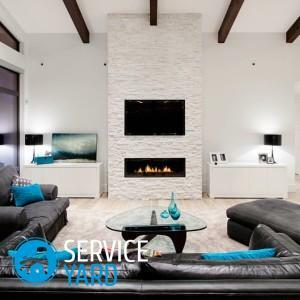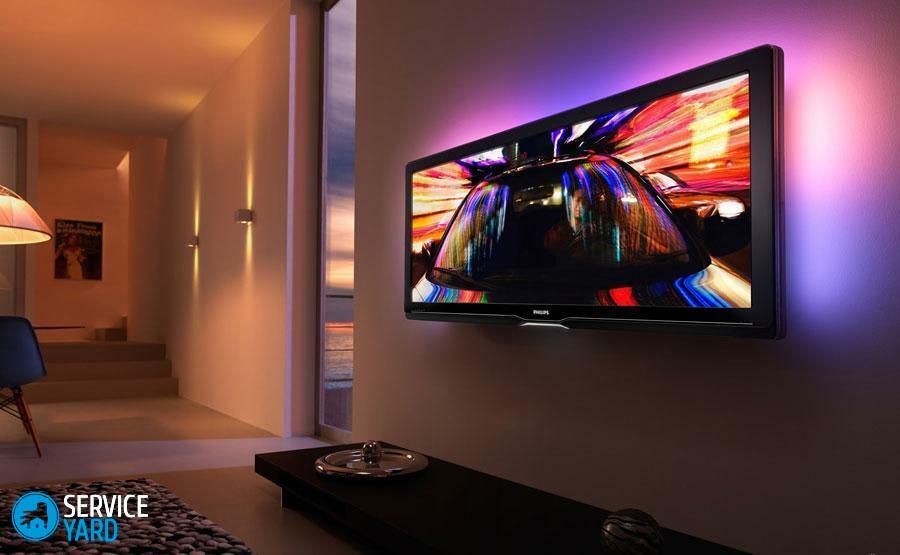
- Plasma panel
- LCD TV
- LED panels
- How to choose a TV for home?
Now it's not so easy to choose a TV.The fact is that in stores they are presented in huge numbers, and they use completely different technologies. Before the customers the task is quite difficult: to decide which technology is better, for example, what is better - plasma or LCD TV.We learn that they are all of themselves.
to the contents ↑Plasma panel
The base of the TV is represented by two very transparent glass plates. The space between them is intended for special vessels that fill electrically charged gases. When an electric charge is applied, the gas begins to glow.
The surface of the vessels covers the fluorescent composition of the phosphor. Each pixel of the plasma TV includes three vessels that fill the red, green and blue phosphor.
Important! When controlling the level of three colors, it is possible to reproduce any color. To control the level of electrical charge, which affects the vessel, the computer is designed.
To date, the evaluation of plasma panels - the most controversial. Many believe that the technology is dying out, since a limited number of manufacturers are involved in the production of plasma. But still, thanks to this technology, the image is of the highest quality, inaccessible to other technologies.
Pros
Such models differ:
- A qualitative and clear image;
- Bright intense colors and contrast;
- Wide viewing angle;
- Ideal black transmission;
- Support 3D;
- Large screen size;
- Realistic image.
Cons
The disadvantages are:
- Surface vulnerability to damage;
- Higher power consumption;
- Strongly reflective surface, which sometimes does not cope with even an anti-reflective coating;
- A significant weight of the device, which is difficult to fix on the wall.
LCD TV
It is rather difficult for an ordinary consumer to choose which TV is best - LCD or plasma, because their technologies are somewhat similar. LCD TV construction - multi-layer structure:
- TFT thin film transistors and electrodes are deposited on the parallel glass plates by spraying.
- The space between them is filled with a thin layer of liquid crystals, through which an array of a huge number of pixels is formed.
- Placement RGB-stencil - before the pixel, and, before each.
- Polarization filters with perpendicular axes are placed on the plates.
- Fluorescent SSFL lamps are used for backlighting.
Important! After the voltage is applied, the shape of the crystals changes, they polarize the light. To control the light transmission of crystals, the voltage across the electrodes changes. Thanks to the transistors, one of the three cells on the RGB-stencil is opened. To form a color image, the basic colors are combined: red, green and blue.
Pros
It's hard to choose which is better - LCD or plasma TV, because the first do have some differences:
- Compact design;
- The correct geometry of the image;
- No flicker.
 The advantages are:
The advantages are:
- Low power consumption;
- No static voltage on the screen;
- Low price;
- Long service life.
Cons
Disadvantages are presented:
- Lower contrast;
- Low depth of black color;
- A deterioration in the brightness and hue of the image when the viewing angle is increased.
LED panels
Despite the fact that this technology is considered new, it is based on the same principles as for conventional LCD TVs. The only difference is the replacement of fluorescent LED backlight arrays, which include white and multicolored RGB LEDs. It is thanks to these innovations that consumers notice a number of positive changes.
Types of LED backlight:
- Edge, which is fairly simple and inexpensive. In this case, the LEDs are located around the perimeter of the screen, for a uniform distribution of the backlight, a special scattering film is used, located behind the screen. The main advantage is the ability to produce very thin panels, up to 1 cm
- Direct, in which the location of the LEDs - uniform throughout the volume.
Pros
Advantages of the technology are:
- Excellent color rendering, brightness and contrast;
- Displays a realistic and voluminous image;
- It is possible to adjust the brightness in different areas.
But, as usual, if there are merits, there are some disadvantages that are revealed in:
- At the worst angle of view, it is difficult to decide what is better - LCD or LED TV;
- Brightness can be distributed non-uniformly across the screen;
- Colors may be displayed incorrectly and unnaturally;
- Great value.
How to choose a TV for the house?
First of all it is determined, for what, the TV will actually be used. Perhaps it will be required for viewing news and on-air TV programs, and perhaps you are a fan of concerts and action movies? Where will it be located?
Screen type
You need to understand, for the living room or the kitchen you need completely different screens:
- The living room is the place for a lot of equipment: here you can find DVD and Blu-Ray players, speakers and much more. Here, full-scale plasma will also be appropriate.
- In the kitchen, the TV normally serves as a background. The compact LCD TV perfectly fits.
- The bedroom usually shows cable TV and Internet content. Therefore, it will be a good option for both plasma and LCD or LED corresponding to the size of the room and layout of the format technique.
It is important to understand what is needed.
Size
When choosing a TV, you need to determine where it will be located in the apartment. Before choosing a TV LCD or LED, you need to know in which room it will be located: in a darkened room or a brightly lit room.
Important! No less important is the distance to the viewing site, for example, a sofa. The best value is 2.5-3 meters.
Resolution
This characteristic has a direct connection with the diagonal of the device. Both of these parameters greatly affect how the image is perceived:
- With a larger screen resolution, it becomes possible to see more fine details and effects more clearly.
- As soon as the resolution decreases - it is necessary to put up with small errors of the image, which are very noticeable from a close distance.
As you can see, all the same, the question is not so simple. But, everyone chooses for himself. First you need to find out what exactly TV is for, and then make a choice. Well, of course, take into account the budget. We hope our article will help in choosing.



